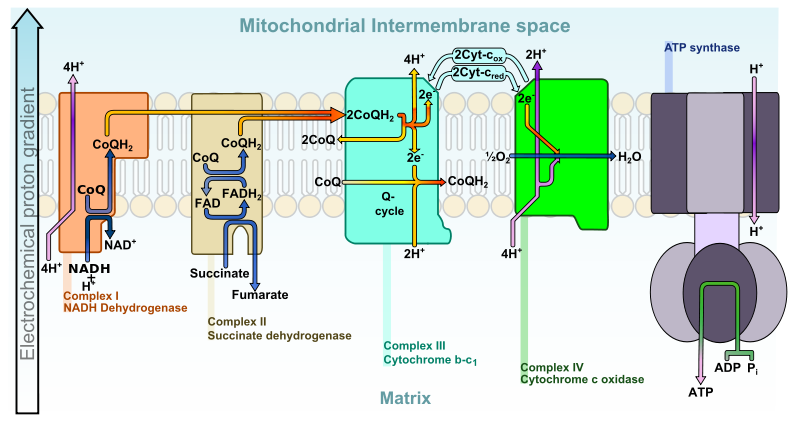Harnessing Light Energy to Enhance Longevity in Roundworms
Written on
Chapter 1: Introduction to Mitochondrial Function
The concept might sound quite unconventional, but it’s grounded in a recent study—specifically, a preprint that is still pending peer review. This research focuses on the well-known roundworm, Caenorhabditis elegans. While humans aren't ready to directly harness sunlight for immortality, we should still enjoy the outdoors for vitamin D, improve our vision, and stay active.
How exactly does light relate to increased lifespan?
It all revolves around mitochondria, often described as the powerhouses of cells. This analogy isn’t entirely off-base since mitochondria play a crucial role in producing ATP, which serves as our primary energy source. While I won’t delve into the intricate details of this process, here's a simplified illustration of a part of it:

This diagram illustrates the movement of protons across the mitochondrial membrane. The flow of protons is essential for the reactions that yield ATP. This process relies on the membrane potential, which is the charge difference between the two sides of the membrane.
However, as we age, this membrane potential tends to decline—possibly due to proton leaks. This results in a less vigorous proton exchange and consequently, a decrease in ATP production.
Chapter 2: The Role of Light-Activated Proton Pumps
What if we could enhance this proton exchange using light-activated proton pumps?
In this study, researchers genetically modified the roundworms to express a light-activated proton pump targeting mitochondria. By shining light on these worms, with the help of a co-factor molecule, they stimulated the movement of protons across the inner mitochondrial membrane.
The researchers conducted experiments with different worm strains, light intensities, and laboratory settings. Their thorough approach is commendable and should serve as a model for future studies to minimize unexpected variations.
On average, these modified worms experienced a lifespan increase of about 30%. Observations revealed that the proton-pumped worms were generally more active than their non-pumped counterparts, although their movement on food was an exception.
The study concludes:
Maintaining membrane potential during adulthood is adequate to slow the natural aging process and enhance certain health indicators. This research highlights the importance of mitochondrial function in aging and points to innovative strategies for delaying aging through optogenetic techniques as an energy alternative.
Interestingly, the authors noted that slight suppression of mitochondrial activity during development can also prolong the lifespan of C. elegans. They suggest:
This may indicate a lifespan-extending hormetic response due to mitochondrial stress during development, contrasting with the beneficial effects of sustaining mitochondrial function during adulthood.
In essence, while mild stress on mitochondria during early stages might lead to a stronger adult worm, it’s beneficial to support mitochondrial health later in life. If you don’t have access to a proton pump, regular exercise can also help maintain mitochondrial function.
Thank you for reading! If you're interested in exploring broader scientific concepts, philosophy, technology, and psychology, consider subscribing to my newsletter, Thinking Ahead. It’s free, and I assure you won’t receive unwanted messages.
In this video titled "Harvesting Dark Energy, Making Own Telescope, Escaping Gravity Wells | Q&A 199", experts discuss various methods of energy harvesting and the implications of such technologies in our understanding of physics and life extension.
The second video, "TEDxJuanDeFuca - Max Donelan - Harvesting Human Energy", delves into innovative ways we can utilize human energy for sustainable living and health benefits.